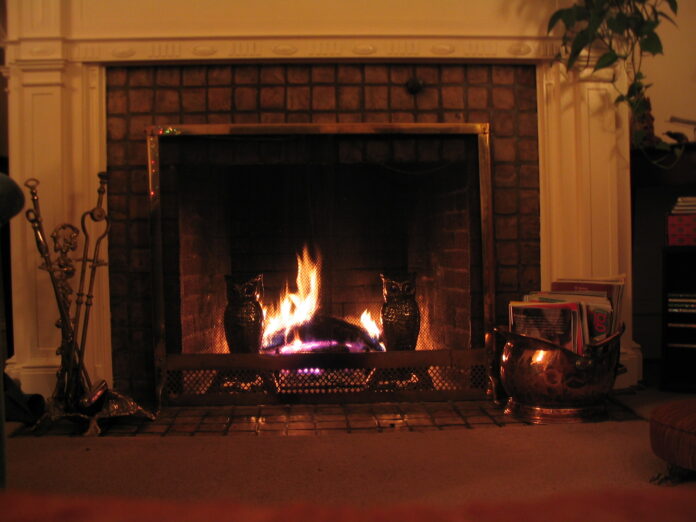It’s a great idea to add a gas fireplace to a new home if you are building one. Regardless of whether you already own a home but need to replace your central heating, you will be amazed at the different types of gas fireplaces available. Today, you can find a fireplace that will provide you with comfort and a variety of options regardless of your budget. It is not surprising that these furnaces are becoming more popular, particularly since other fuel alternatives, such as oil and electric heat, are becoming more costly.
The convenience and cleanness of gas fireplaces may be what convinces you to give up the chainsaw for good and use them instead. In addition to creating a pleasant atmosphere with little effort, they can be placed in many different locations. An attractive fireplace can be an excellent addition to your home. In this guide, you will learn about gas fireplace maintenance.
What are the types of gas fireplaces?
Gas fireplaces come in many styles, shapes, and sizes, depending on your needs, preferences, and location.
- Natural vent uses your existing chimney or a metal chimney that you have built yourself. A flexible liner or a pipe within the chimney carries the exhaust outside.
- Direct-vent burners are the most energy-efficient; they draw in outdoor air for combustion and then send that spent air out through a dual venting system, thereby minimizing heat loss. Air can be vented through the roof or an outside wall using a venting system customized for the unit. They feature a sealed glass door to ensure indoor air quality and enhance proper combustion. Despite allergies, sinus conditions, or lung conditions, this type of gas fireplace is the safest.
- Vent-free: An unvented gas fireplace doesn’t require a chimney, making installation possible nearly anywhere. They are expected to burn at 99% efficiency with a maximum BTU output of 40,000 when they leave the factory. A unit with a 6,000 to 10,000 BTU seating capacity is approved for bathrooms and bedrooms.
As soon as the oxygen level dips too low, these units come with an oxygen depletion sensor that shuts them off automatically. As they vent into your home, they are designed to burn cleanly. However, most should be serviced regularly for optimal performance. Some states, such as California, have banned them.
- Gas Fireplace Inserts: Available in vent-free and direct-vent units, these units can be used in conjunction with your existing fireplace to provide maximum comfort. A blower is usually included with these units.
- Log sets: If you are interested in converting a wood-burning fireplace to a gas one, there are several designs to suit your preferences, ranging from fully vented to vented free models.
What kind of upkeep is necessary for a gas fireplace?
Professional Upkeep Every Year
• Inspecting and cleaning the thermometers, power pile, protection of individuals, and sensor.
• Making sure the device is functioning correctly.
• Examining links
• Examining and cleaning the burners.
• Checking for leaks of combustion products.
• Making sure the appliance is venting correctly.
Gas fireplace maintenance
Seasons change, the weather warms up, and your fireplace goes dormant until the fall, which is the perfect time for yearly maintenance to ensure your fireplace, stove, or insert keeps working effectively for years to come! Proper maintenance is essential for your fireplace to last a long time and operate safely. If you want your fireplace to function correctly, you should contact a licensed gas service provider at least once a year to conduct maintenance.
It is not recommended that the homeowner perform gas component maintenance since damage to any components could potentially lead to severe injuries. Further, a licensed gas inspector will be trained to inspect the venting and check for corrosion, excessive condensation, and proper fittings and joints. Call your local Regency Certified Dealer today to schedule an appointment. They will be able to ensure your unit is in perfect working condition and ready to keep you warm all winter!
Read more: An Ultimate Guide About Maggots Like Worms In House With All Necessary Facts
Make sure to do the following before cleaning anything:
- Make sure the fireplace is turned off completely, including the pilot light.
- Take the time to allow the fireplace to cool completely.
- Wear gloves and eye protection.
- Ensure you have your Regency manual on hand for cleaning, removal, and replacement instructions.
Top 4 maintenance tasks for gas fireplaces
1. Turn off the pilot light
If your unit has a standing pilot light (always on), please turn it off and give it enough time to cool before servicing it. In addition, during the warmer months, turning off the Standing Pilot mode will save you money each month on your gas bill!
2. Maintain a clean home!
Using the instructions in your owner’s manual, remove your glass front and place it on a soft surface. Using a soft cloth and fireplace glass cleaner, clean the glass on both sides once removed. It is essential to use fireplace glass cleaner since traditional cleaners can leave chemical residues on the glass, creating noxious odors or permanently damaging the glass when the fireplace is reopened.
3. Louvers and airflow are clean.
Wipe the louvers of the unit with a soft or microfiber cloth to remove any dust or dirt that has accumulated over the years. Even if your team does not have louvers, you should visually inspect the air cavities for obstructions or excessive dust accumulation.
4. Clean and inspect the unit.
The unit’s exterior should be cleaned with a damp cloth, and the paint should be inspected. Peeling or bubbling paint may indicate that the fireplace is not operating correctly, and you need to contact a professional gas fireplace installer to examine the unit further.
Advantages of Gas Fireplaces
- Convenience: Gas fireplaces are incredibly easy to use, with a simple flip of a switch or press of a button, you can instantly enjoy a warm and cozy fire.
- Energy Efficiency: Gas fireplaces are highly efficient, producing more heat with less fuel compared to traditional wood-burning fireplaces.
- Cost-effective: Gas fireplaces cost less to run compared to wood-burning fireplaces, and there is no need to purchase and store firewood.
- Safety: Gas fireplaces are much safer than wood-burning fireplaces as there is no risk of sparks or flying embers that could cause a fire.
- Cleanliness: Gas fireplaces do not produce the smoke, soot, and ash that wood-burning fireplaces do, which means there is no need to clean up after every use.
Disadvantages of Gas Fireplaces
- Limited Aesthetics: While gas fireplaces can provide warmth and ambiance, they do not have the same visual appeal as a traditional wood-burning fireplace.
- Dependant on Gas Supply: Gas fireplaces require a reliable source of natural gas or propane to operate, which may not be available in some areas.
- Maintenance: Gas fireplaces require regular maintenance and cleaning to ensure they are functioning properly and safely.
- Initial Cost: While running a gas fireplace is cost-effective, the initial cost of installation can be expensive, especially if you need to run a gas line to your home.
- Limited Heat Distribution: Gas fireplaces are designed to provide heat to the immediate area and do not distribute heat throughout your home as effectively as a central heating system.
FAQs (Frequently Asked Questions)
- What is the lifespan of a gas fireplace?
In general, you should expect your gas fireplace to last between ten and fifteen years before needing to be replaced.
- Do gas fireplaces need to be vacuumed?
No, the rocks can’t get through the dust. Vacuum all corners of the fireplace box once the stones have been cleaned to remove dust, cobwebs, and insects. Dry the components of the pilot light and the gas line using an old cloth.
- Is it possible to update a gas fireplace?
An old or outdated gas fire may not benefit from a fire surround update; it just needs to be replaced! Investing in a new fire insert and installing it won’t be among the most inexpensive fireplace makeover options.
- Is it necessary to clean a gas fireplace?
Although gas fireplaces do not produce creosote, they still need to be cleaned annually. While propane and natural gas are clean-burning gas fuels, they can still create buildup that needs to be cleaned, so they don’t produce the same byproducts as wood.
Apart from this, if you are interested to know more about IRON CORE TRANSFORMER then visit our TECH category.











